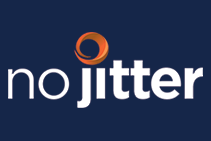The rapid growth of cloud players in the business communications space has stolen headlines lately. One particular piece of news that caught my attention is Vonage communications platform as a service (CPaaS)
revenues now represent nearly half of its commercial business. It triggered my desire to check the status of the CPaaS market. Let’s take a look.
A fast-growing market
The business communications market is shaping up around three segments: unified communications as a service (UCaaS), contact center as a service (CCaaS), and CPaaS. The unified communications and contact center markets existed before the cloud. However, CPaaS accompanied the cloud and is fueled by impressive growth. In its latest
CPaaS MarketScape assessment, International Data Corporation (IDC) measured CPaaS at 30% last year, accelerating to 40% in the next three years. By 2023, market sizes expect to be in the $60 billion range for unified communications, $15 billion for contact centers, and $17 billion for CPaaS.
CPaaS addresses a broad range of use cases growingly related to marketing, sales, and customer service. For a better example, my colleague and fellow UC analyst Blair Pleasant, did a comprehensive review earlier this year (
see related No Jitter article). The prominence of these customer-facing applications led Twilio, a major CPaaS provider, to anchor itself in the customer engagement space. CPaaS indeed plays a central role in unifying customer experiences, and breaking the traditional departmental divide. It also offers a consistent set of APIs to handle the various customer communication touchpoints, enabling the creation of omnichannel experiences and their integration into enterprise workflows.
A crowded space
Most of us are familiar with Twilio and Vonage, the companies that pioneered the CPaaS category. However, several other companies have grown into sizable players and should also be on your radar. Overall, I’m tracking 35+ companies in the segment—all with rich service portfolios that include global network connectivity for voice and SMS, communication APIs, and authentication services. Supported channels include voice, video, SMS, messaging, and (increasingly) email. Differences are narrowing between these offers, and the breadth of supported messaging channels varies. A few service providers support Internet of things (IoT) devices with programmable SIM. Video services enjoy different levels of maturity in their ability to support the real-time needs of this channel at scale.
Differentiation is shifting to the delivery of programmable components—particularly those that can accelerate the development of customer engagement solutions. The most frequent examples are conversation APIs to unify customer interactions across channels, low-code workflow builders for processing interactions, and routers to distribute work to workers.
Here's a quick rundown of seven major CPaaS providers' offerings:
Twilio initially created the CPaaS category. It has been aggressively expanding it by creating programmable components and through acquisitions. Specifically, it bought SendGrid to add email to its roster of supported channels and Segment for its customer data platform (CDP). A few weeks ago, it announced its intent to
acquire Zipwhip, an API provider, lifting its annual revenues over $2 billion.
Vonage entered the CPaaS market with the
acquisition of Nexmo and has been focused on uniting UCaaS, CCaaS, and CPaaS. For 2021, Vonage forecasts its API revenues to be over half a billion dollars. It operates a private multiprotocol label switching (MPLS) broadband network in the U.S. It gained best-in-class video and WebRTC capabilities when it
grabbed TokBox in 2018.
Sinch completed an initial public offering (IPO) in 2015. Founded as CLX Communications in Sweden, Sinch grew through acquisitions and gained an international footprint after
buying ACL Mobile in India and Wavy in Latin America. Last November, it
purchased SAP Digital Interconnect division including the CCaaS business the German juggernaut had built on its WiCom acquisition. In February, the $1 billion business
announced that it was acquiring Inteliquent and its interconnection network. Last week, it
announced a $1.1 billion fundraise and snagged Australia-based MessageMedia for $1.3 billion.
Bandwidth became public in 2017 and builds its differentiation on the ownership of its IP network in the U.S. It expanded its global coverage with the
acquisition of Voxbone, a cloud communications provider, last October. Owning its network gives it extra control over prices and the services it can offer such as e911. The company focuses on communication APIs, and serves many prominent UCaaS and CCaaS vendors, including Cisco, Genesys, Google, Microsoft, RingCentral, and Zoom. It has a revenue run rate of $350 million.
Kaleyra started as Ubiquity in Italy and became public in 2019. Its
acquisition of mGage, a mobile messaging company last November pushed the company through the $350 million mark. Unlike most other CPaaS providers, Kaleyra focuses on enterprises rather than developers, offering a private cloud option. It has customer engagement components for interactive voice response, interaction routing, agent desktops, and building bots.
Infobip was founded in Croatia and has also been growing rapidly through acquisitions. After a series of point purchases allowing it to expand its geographic footprint, last November it
acquired Amdocs OpenMarket, bringing revenue to over $1 billion. The company features strong customer engagement capabilities with a digital customer service solution, a bot development platform, a campaign manager, and a CDP.
MessageBird originated from the Netherlands and also built a global footprint through acquisitions. Its growth is fueled by a staggering $1.1 billion in funding. Along the way, it
bought Hull for its CDP technology. It offers customer engagement building blocks, including interaction routing and digital customer service. It recently
acquired email platform provider SparkPost— propelling its revenue run rate through the $500 million mark.
CPaaS and CCaaS increasingly overlap
I’m seeing unprecedented interest from enterprises to use APIs and programmable components not only for augmenting but for building their next-generation contact center platforms. When Twilio introduced Flex, it pushed the envelope of what can be done by providing programmable building blocks that accelerate solution development. Amazon Web Services (AWS) has also brought to the market a similar option with Amazon Connect, a solution packed with APIs and complementary web services. These two companies have shared impressive traction numbers. For example, at investor conference last November, Twilio disclosed it was powering half a million contact center agents and had 600 Flex customers. AWS added 5,000 customers during the peak of the pandemic alone.
Enterprises are considering the CPaaS option for three main reasons. It gives them control over their customer engagement solution, letting them in particular easily add and mix channels, and power customer journeys spanning across departments. It gives access to best-of-breed AI capabilities. It eventually lets them integrate with the myriad of applications, commercial and proprietary, they use.
It’s also worth mentioning the move in the CPaaS direction of major CCaaS providers. Cisco recently
acquired IMImobile and is shifting to API-first solutions. Last but not least, Avaya, Genesys, and Talkdesk have touted composable approaches that share many common attributes with CPaaS.
The times of considering CPaaS only to augment existing solutions are over. Communication platforms now include a combination of APIs and programmable components that should be considered as you transition your customer service and customer-facing workflows to the cloud.
Learn more about CPaaS, CCaaS, and UCaaS at Enterprise Connect this September in Orlando, Fla.
Register with promo code NJAL200 and receive $200 off your registration.
This post is written on behalf of BCStrategies, an industry resource for enterprises, vendors, system integrators, and anyone interested in the growing business communications arena. A supplier of objective information on business communications, BCStrategies is supported by an alliance of leading communication industry advisors, analysts, and consultants who have worked in the various segments of the dynamic business communications market.











